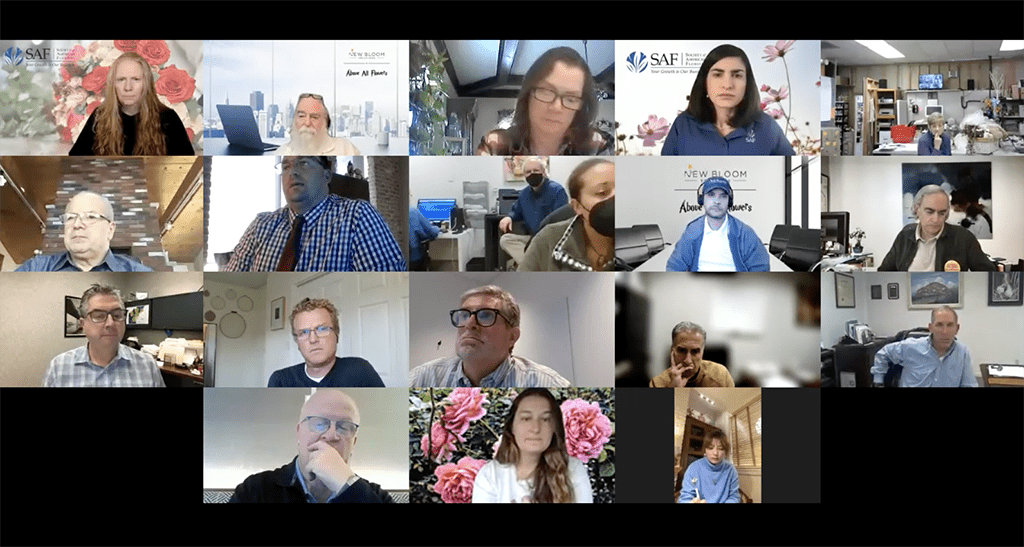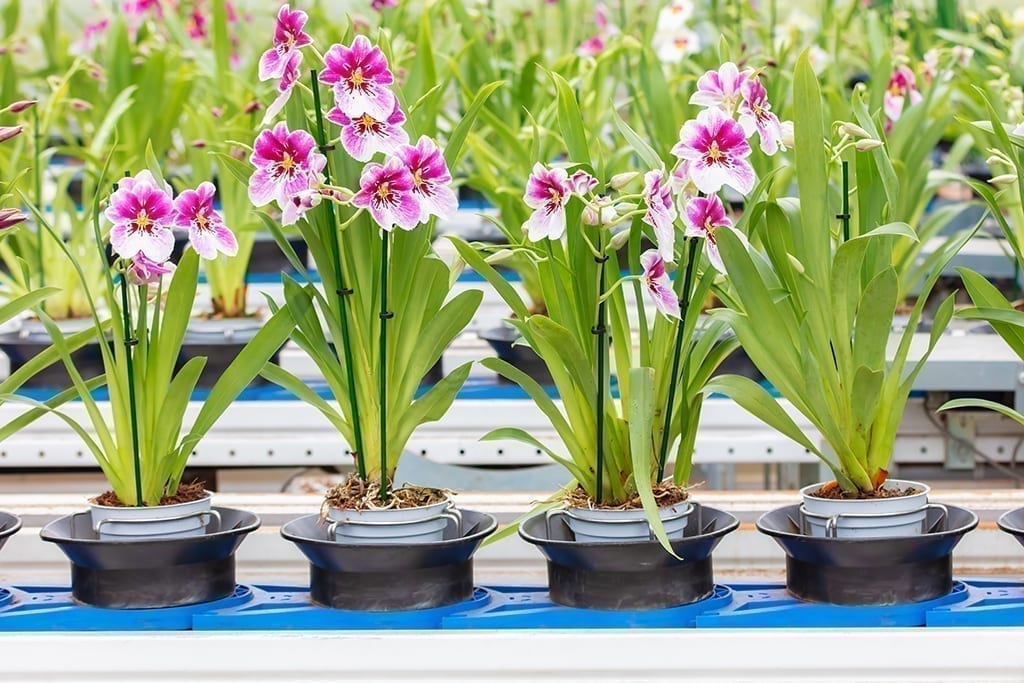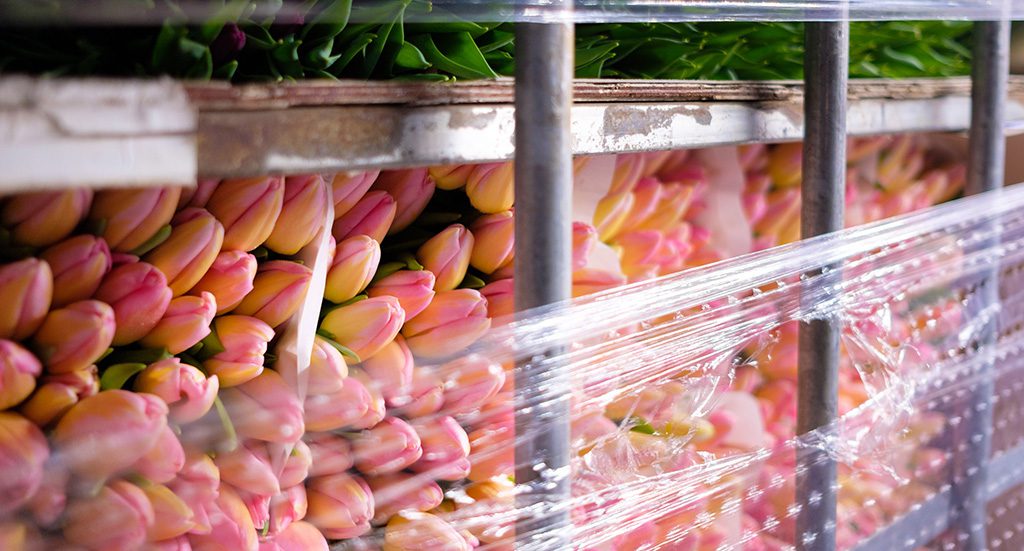
Industry professionals gathered virtually Jan. 18 for the Society of American Florists’ Idea Exchange. More than 50 floral professionals discussed the ongoing issues with the supply chain and shared ideas to cope with limited availability and delays in delivery.
Plan and order well in advance. Communicate throughout the supply chain. Update online inventory. Work with what you have.
That was the advice from florists, wholesalers, importers and other industry experts who gathered Tuesday for a virtual discussion hosted by the Society of American Florists on how to respond to the ongoing challenges with the supply chain.
The free event, Idea Exchange, drew more than 50 floral professionals who shared the latest developments on the floral supply chain and offered their strategies to cope. A recording of the event is available to watch on-demand.
The State of the Supply Chain
While many issues that persisted throughout 2020 and 2021 are still ongoing, such as backlogs at ports, limited supply of inputs for manufacturers and labor shortages in the trucking industry, a few new developments are threatening further complications.
David Kaplan, president of Above All Flowers, told the event’s attendees that he is bracing for the impacts of China’s lockdowns because it will affect manufacturing and cargo shipping. “People really want to get their products out by air transport because they know that delays are going to be there on sea transport, which is driving up the freight market even higher,” Kaplan said.
Airlines are capitalizing on the demand. Many cargo airlines have rerouted flights out of South America to other parts of the world to carry more lucrative cargo, Kaplan said.
“A lot of the charter companies are bypassing Miami because it’s a short flight from South America, and some of it involves some deadheading, which a lot of the airlines don’t have to do and can get paid very handsomely by not doing that.”
When product arrives in the U.S., a shortage of truck drivers is driving up the cost of shipments. In Miami, Kaplan estimates the truck driver to load ratio is 13 to one. “So it comes down to a bidding war,” he said.
Even without those issues, winter brings with it an increased use of sick days and delays because of weather, adding to the unpredictability.
“The domino effect on that is tremendous,” said Nick Fronduto, chief operating officer at Jacobson’s Floral Supply in Boston. “So we’re dealing with that. We’re keeping our fingers crossed, but I know it’s inevitable that we’re going to have some disruptions in supply between now and Valentine’s Day that will cause problems.”
Strategies to Cope
With prices up and shipping problematic, Josh Wesner, national sales manager for Syndicate Sales, says it’s time to plan ahead.
“I would plan ahead,” Wesner said. “If you haven’t started looking at Mother’s Day, I would start doing that.”
Experts suggested ordering early and taking inventory often. Florists must be flexible in case there are delays or shortages, they said.
Jennifer Barnard of Tillie’s Flower Shop in Wichita, Kansas, said she takes inventory monthly to plan her offerings around what’s available.
“We took inventory before deciding what Valentine’s production would be,” she said. “We virtually took foam out of all of our Valentine’s Day line-up because we’re trying to reserve that foam for our sympathy work only.”
If the shop receives a shipment of a flower that wasn’t in a product recipe, they create a new recipe in so they can use that inventory, she said.
Holly Urban of Froggy’s Garden suggested looking for ways to reuse items, such as vases in exchange for a discount. She asks customers to donate vases and says many are willing to so and don’t expect anything in return.
Communication is Key
When it comes to keeping everyone in the supply in the loop on delays and substitutions, it can be difficult to know how to best communicate.
Fronduto suggested that one-on-one conversations are the best way to get information across because it presents an opportunity for sales representatives to help florists find alternatives.
“Over the past year, I think our buyers are communicating with reps more than ever,” he said. “There’s a lot of things that can take place at a phone call that maybe necessarily wouldn’t on an email blast.”
Keeping websites up to date with current offerings and letting customers know about potential delays with their shipments are key to happy clients, participants agreed.
“We try and communicate as much as we can via email and website, logging messages to our customers about the various challenges that invariably occur based on an order that’s been placed and our actual delivery date for the order,” said Tim Dewey of DV Flora.
Florists are finding that communicating supply issues with customers, whose patience is running thin, is becoming more challenging.
“Some are understanding but people are tired of hearing COVID as an excuse,” said Cameron Pappas, of Norton’s Florist in Birmingham, Alabama. “It’s a reality, but people are like, ‘I don’t care. Why didn’t it look like the picture?’. We get complaints about substitutions. That kind-hearted, loving ‘Thank-you-so-much!’ — that’s over.”
Barnard has invested a lot of time in making sure her website reflects what she can fulfill in order to avoid customer disappointment.
“Our customers, they like it to look like the photo,” she said. “So ever since the pandemic started, I am doing a lot more work on our website. I am constantly having to rephotograph stuff, take stuff off. I really have to make sure our website reflects what we have in stock, which I’m okay with. And so as long as I’m doing that people seem to be okay because we always want to make sure it looks like a photo.”
Gabriel Beccera, president of Golden Flowers, encouraged the event’s attendees to communicate with consumers by telling the positive stories behind flowers through blogs, YouTube and social media.
He closed the event on an upbeat note. “I never believed the consumption of flowers would be at the level they are at this moment,” he said. “It’s important that we put that in perspective.”
Kristine Gill is a contributing writer for the Society of American Florists.





